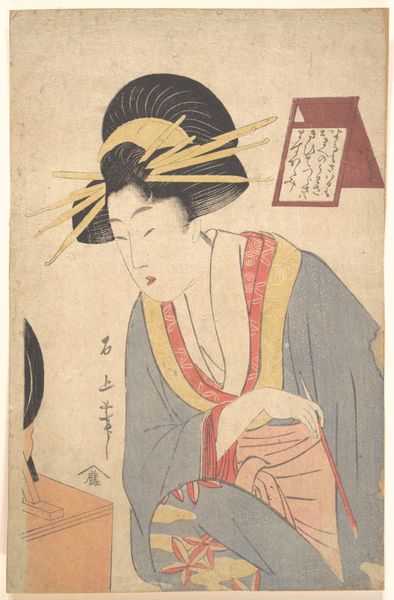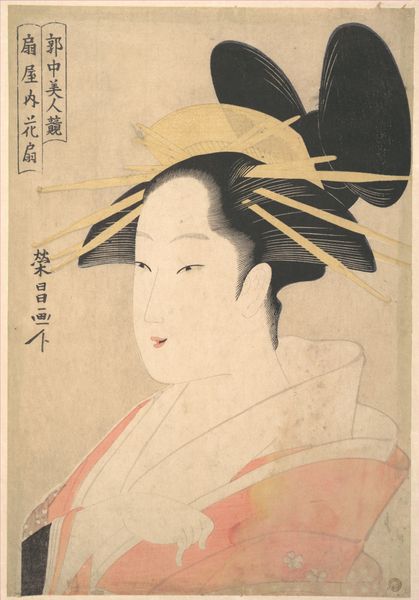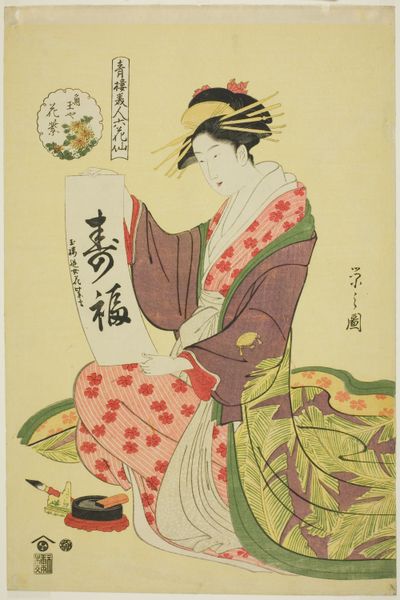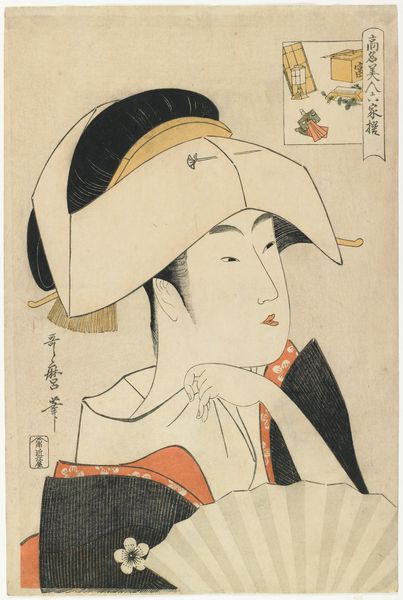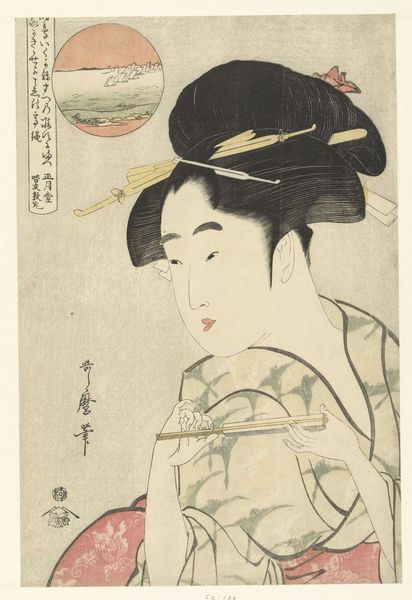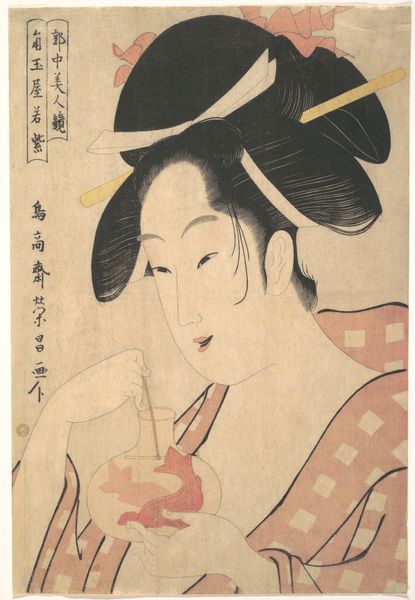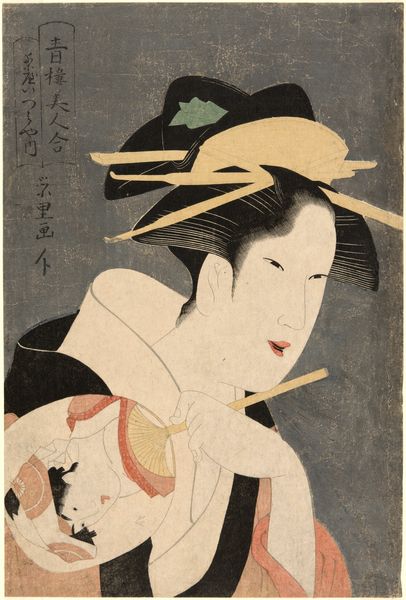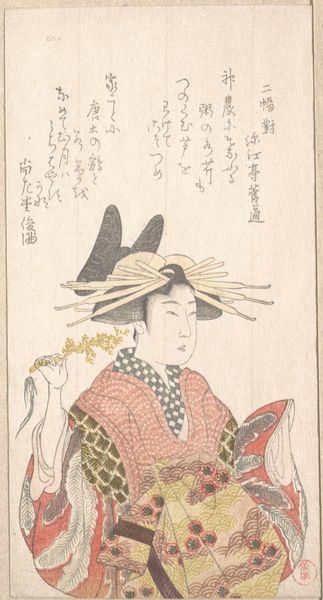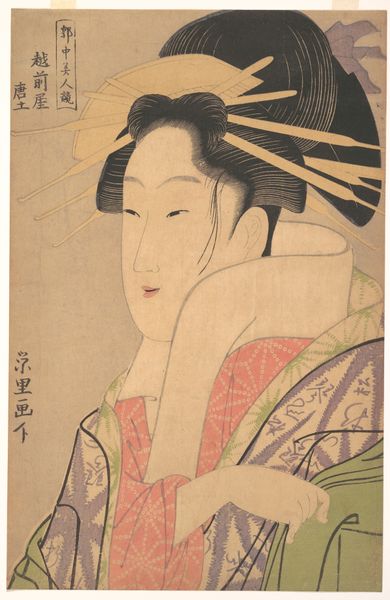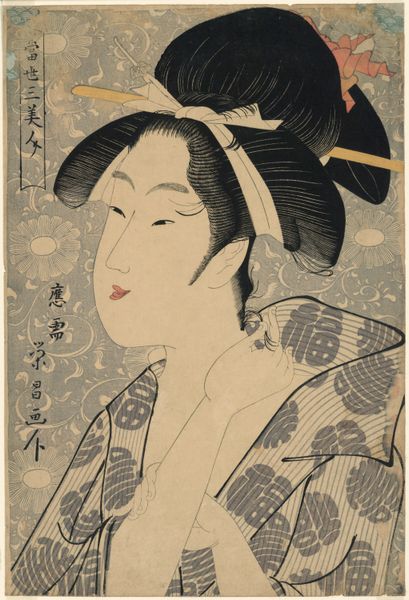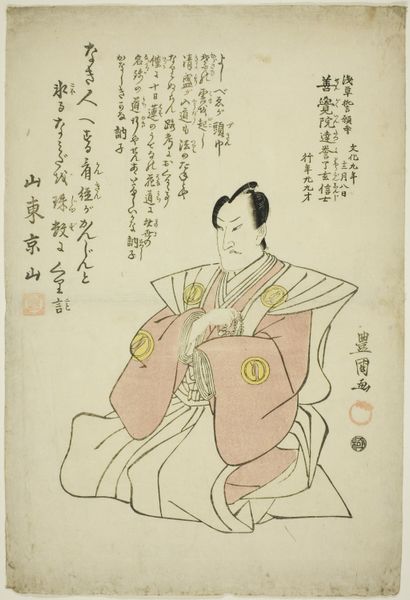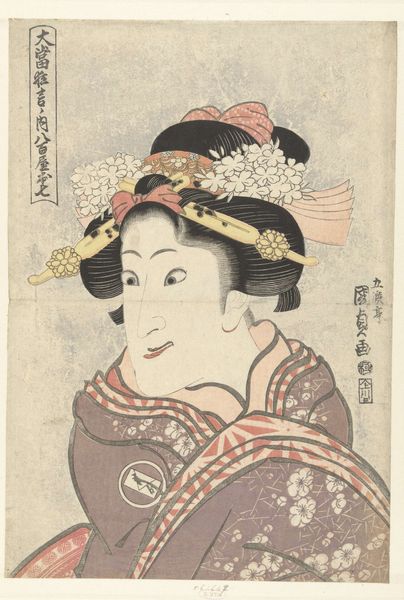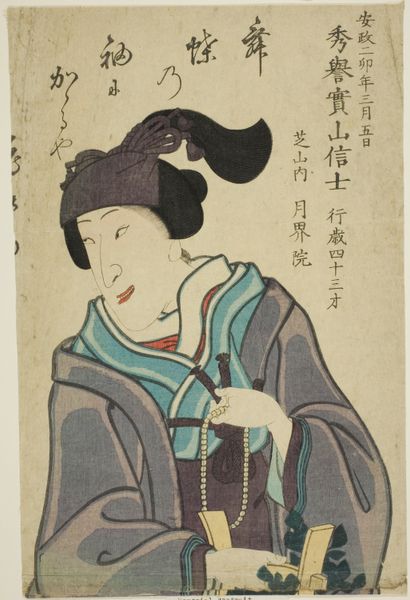
Dimensions: height 405 mm, width 277 mm
Copyright: Rijks Museum: Open Domain
Curator: Here we have an early 20th-century print from an anonymous artist titled “Lezende vrouw”, or “Reading Woman,” which now resides here at the Rijksmuseum. Editor: It's a captivating image. Her eyes are lowered, and she's utterly absorbed in that book, seemingly oblivious to the world around her. The neutral background gives it an intimate feeling. Curator: Indeed. The work adopts the conventions of the Ukiyo-e style, very popular in Japanese prints for centuries and deeply ingrained in the visual culture, though often associated with earlier time periods. Note how it depicts everyday life, moving away from strictly religious or aristocratic themes. This shift mirrors a broader social movement where art became more accessible to common people. Editor: The act of reading carries its own symbolism, doesn’t it? The book could be an allegory for wisdom or contemplation. The woman is holding it reverently. I also see that there is a butterfly that seems placed decoratively in the composition. Curator: True, and the butterfly symbol also could have multiple interpretations ranging from themes like transformation, a soul or a lighthearted essence. But it would also suggest a woman with sophisticated sensibilities or who may come from a noble heritage. Editor: So there's perhaps a subtle narrative at play about social standing, even in a seemingly mundane scene of someone engrossed in a book. Curator: Absolutely. Consider that the art world's increasing accessibility also allowed commentary on these changing dynamics through art. It invited its contemporary audience to view portraits, and Ukiyo-e imagery, more broadly. Editor: Well, she's made me want to pick up a book. I see an essence of transience here, she exists for one fleeting moment. It's quite timeless actually, how a portrait can convey such delicate beauty through simple composition. Curator: I agree. Hopefully, viewers today will find it valuable to reflect on the shifting social forces in art history and the lasting power that print media had on societal identity in that time.
Comments
No comments
Be the first to comment and join the conversation on the ultimate creative platform.
